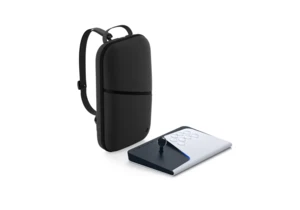When it comes to audio performance, Bowers & Wilkins is on a hot streak. The company manages to consistently offer balanced and detailed sound across its line of headphones and earbuds. The Px7 and Px8 lines have been mainstays on our best headphones list for a while now, primarily for their outstanding audio quality. With the Px7 S3 ($449), the company updated a previous model with changes to its sound platform and some subtle design tweaks. And that combination continues an upward trajectory that shows no signs of slowing down.
What’s good about the Px7 S3?
Bowers & Wilkins has been crafting a superb mix of sound and design for a while now. That run of form continues on the Px7 S3 with an audio platform that’s powered by 40mm bio cellulose drivers, discrete headphone amplifiers and a 24-bit audio connection. There’s also support for the full suite of aptX codecs (Lossless, Adaptive, HD and Classic) as well as TrueSound mode. That latter item is a dedicated audio profile that the company says “allows you to hear music and movies with the striking accuracy and realism of the original recording, with nothing added and nothing taken away.”
All of that combines for some truly stellar audio performance on the Px7 S3. The sound is crisp and detailed, even offering nuance to more bass-heavy and chaotic genres. I heard some particular elements in the percussion on Turnstile’s “DULL” that I hadn’t noticed before on other headphones or earbuds. You can also hear the band’s use of guitar effects to a greater degree on this model (hello reverb and chorus). Plus, even at their most raucous, tracks have nice separation so that all of the instruments gain an airy, atmospheric quality rather than sounding compressed.
I honestly couldn’t tell much of a difference between the stock tuning and the TrueSound mode. I think that’s a testament to the device’s sonic prowess out of the box. But, if you find that you do need to make a change, there’s a full 5-band EQ available for that.
Bowers & Wilkins says it “greatly upgraded” its active noise cancellation (ANC) setup on the Px7 S3. It added two more microphones on this model, so there are now eight total units with an even split on each ear cup. ANC has always been… fine on the company’s headphones, but it never came close to the supreme world-blocking capabilities of Bose or Sony. Here, there is noticeable improvement, but TV sounds, human voices and constant noise from planes, fans and sound machines still cut through.
Other improvements on the Px7 S3 include slight changes to the design of the headphones. Bowers & Wilkins slimmed down the ear cups and refined the headband, and these two updates offer a sleeker silhouette and improve overall comfort. There’s still the mix of metal, leather and textured fabric from the Px7 S2 and Px7 S2e, with the only obvious aesthetic change being a new ridged ring around the earcups. There’s no doubt the company has created a sophisticated look, but it would be nice to see some bigger design changes now that three consecutive models have looked nearly identical.
Bowers & Wilkins claims you’ll get 30 hours of battery life on a charge with the Px7 S3. As it has in the past, the company doesn’t specify if this is with ANC on or off. The company has a habit of understating its runtime stats though, and the Px7 S3 continues that trend. After 15 hours of what I’d consider “normal” use — mostly with ANC active, but several times with ambient sound on for calls — I had over 60 percent left in the tank. Better-than-stated battery life is never a bad thing, so just know you’ll probably outlast the company’s numbers in that regard.
What’s not so good about the Px7 S3?
The first strike against the Px7 S3 is its price. At $449, this model is $50 more than its predecessors in the Px7 line. Sure, everything is more expensive these days with the constant churn that is tariffs and other financial uncertainties, but it’s still worth considering that Bowers & Wilkins is asking you to pay more for its upgrades this time around.
The next issue I have with the Px7 S3 is the location of its controls. On the Px7 S2e, the buttons were on the edge of the ear cups — a positioning that’s common among the competition. For this model though, Bowers & Wilkins moved the controls to the edge of the smaller panels where the headband connects to the ear cups. As such, the ledge or lip there is skinnier, so the buttons are more cumbersome to find with your thumb. This may seem like nitpicking, but it’s a change that impacted the overall experience for me as someone who is constantly testing headphones.
Bowers & Wilkins typically focuses on the basics when it comes to its headphones. This means you’ll get excellent sound quality, capable ANC and some audio customizability, but that’s about it. The same holds true for the Px7 S3, as you won’t find any advanced features here that companies like Sony and others may tack on for your convenience. There’s no automatic pausing when you start to speak or sound profiles that can be set to change based on location. It also lacks voice detection for your phone’s assistant and doesn’t offer advertised support for spatial audio. While any number of these could help soften the blow of that $449 price tag, I’d argue the sound is so good you’ll likely be satisfied despite the limited set of features.
Final verdict on the Px7 S3
Bowers & Wilkins has been taking an “if it ain’t broke, slightly tweak it” approach to its Px7 line for a while now, but the S3 version is a more robust upgrade than the previous release. However, the company’s updates are mostly on the inside, with further enhancements to an already stellar sound profile and slight ANC improvements. There are some changes on the outside too, but I’d like to see the company make some bigger strides there the next time it sees fit to “slightly tweak” this model.
This article originally appeared on Engadget at https://www.engadget.com/audio/headphones/bowers--wilkins-px7-s3-review-a-sonic-powerhouse-only-slightly-improved-130027301.html?src=rss https://www.engadget.com/audio/headphones/bowers--wilkins-px7-s3-review-a-sonic-powerhouse-only-slightly-improved-130027301.html?src=rssJelentkezéshez jelentkezzen be
EGYÉB POSTS Ebben a csoportban

Sony just dropped some more details about its upcoming



Google just announced a neat little feature for its Chrome web browser. It'll now show AI-generated review

Sony is suing Tencent for copying nearly every aspect of its Horizon games for the upcoming Light of Motiram, an open-world hunting game with some obvious similarities to Sony's franchise,


